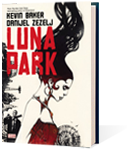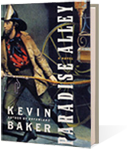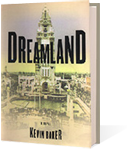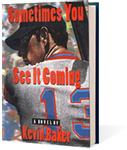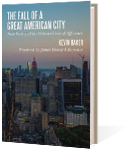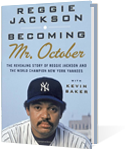THE LOWER DEPTHS by Naomi Glauberman
Naomi Glauberman is an essayist and short story writer
Kevin Baker loves playing with history. In his first novel, Sometimes You See It Coming(1993), he compressed a century of baseball lore into the story of one mysterious player on the New York Mets. His second, more ambitious novel, Dreamland, is named for a real, if unbelievable, place—one of the three great Coney Island amusement parks that drew crowds, accolades and cries of alarm at the turn of the century.
From ever-shifting points of view and perspectives, the book follows a slew of historical and fictional figures as they move between the wonders and weirdness of Coney Island and the squalid streets, bars, tenements, opium dens and sweatshops of Manhattan’s Lower East Side. Baker crams every page with impressions, textures, sights, sounds and memories. Peddlers, tailors, factory girls and rabbis cross paths with Jewish gangsters, whores, brutal cops, corrupt politicians, socialist dreamers, side-show performers and an extraordinary roster of animals—rats, horses, elephants, monkeys, chickens and even a porcupine.
Improbably enough, Sigmund Freud and his gang of psychoanalysts also wander through the book. Improbable, but accurate—Freud and his cohorts toured New York City, including Coney Island, in 1909, and Baker’s portrait of a Freud immersed in his anxieties about his upcoming lectures at Clark University; his deteriorating relationship with his protege, Carl Jung; and his distaste for the excesses of American life are all based in fact.
Other historical figures that populate this novel include Clara Lemlich, a fiery union activist; Frances Perkins, the social worker and reformer; Thomas Edison, presiding at the electrocution of an elephant; and Emma Goldman, the famous anarchist, who wildly applauds Freud’s lectures. In Baker’s book, the foremen at the Triangle Shirtwaist Factory are named Podhoretz and Kristol, in inverse homage to those modern-day neoconservatives.
The blending of fact and fiction in New York City during those wild years instantly evokes E.L. Doctorow’s Ragtime, but though Doctorow danced across the surface of the period, giving us only glimpses of the chaos below, Baker’s Dreamland plunges enthusiastically into the depths. This is no sanitized saga of crowded streets and teeming masses. Death, destruction and decay are never far from the center: Street urchins go hungry and unclothed, boys raising pigeons on rooftops are transformed into sadistic gang rapists and sharply dressed young gangsters poison horses and kill each other with no regrets.
A neat plot summation would only be deceptive (and perhaps impossible). Snaking through the book is a convoluted but historically documented account of revenge and retribution: the sad tale of a gambler, Herman “Beansy” Rosenthal, who talked too much, and of the gangsters and politicians who schemed to do him in.
As these plots wind toward their inevitable denouement, Baker’s characters have plenty of time for observation and reflection, which provide the book’s most resonant moments. The rueful ruminations of Big Tim Sullivan, the Tammany Hall politician and entrepreneur; Sadie Mendelsohn’s memories of her grim life of prostitution; the retelling of Kid Twist’s journey from Eastern European shtetl to Monk Eastman’s gang; and the incredible tales of Coney Island, set forth by Trick the Dwarf, present pictures that are both lyrical and harsh.
Scenes verging on nostalgia or sentimentality are swiftly undercut by a violent reality. Listen to Trick the Dwarf describing a late-night Coney Island scene: “The whores were still up, washing themselves in their room basins. We could hear them calling, each to each, as we climbed the winding, spiral staircase; lovely bright voices, twittering like songbirds; happy to be at the end of the night. Though it was this hour, too, that they tended to kill themselves.”
Most developed is the story of Esther Abramowitz, a factory worker whom we follow from lint-filled sweatshops through cafes and union halls to picket lines and jail. Amid all this grime and drudgery, there are lovely and surprising moments, as when Esther remembers the idyllic summer when the shops were closed and she camped with a group of factory girls in the open air of the New Jersey Palisades: “After a few weeks, their clothes began to turn ragged around the edges. They grew thinner, and browner, and began to take on the look of the hills around them. They went bathing naked in an abandoned quarry, and climbed the sheerest cliffs, and Esther learned to identify birds, and to play poker; to set up a tent and chop wood and start fire—all of the great, frivolous things she would never need to know again. They spent whole blissful hours, too, reading out in the sunlight, all their Dickens, and Hardy, and George Eliot. Shakespeare and their Byron and Keats and Alfred Lord Tennyson. They were more impatient with Madame Bovary and Anna Karenina, they didn’t understand why such women didn’t use their considerable free time to better their minds—though Esther was moved by the hot tears they shed.” At the emotional center of the book is a love story—a sexy, dreamy romance between Esther and Kid Twist, a gangster in hiding. Each Sunday they stroll on the beach or boardwalk, dance, go on every ride, gawk at the exhibits, including incubator babies or acrobats leaping from a tenement fire, eat at the restaurants and make love in an elephant-shaped hotel. Their romance takes them by surprise. It’s sexy exactly because it is inexplicable.
Befitting a novel in which Freud and Jung roam, each of Dreamland’s characters is consumed by regret and anxiety. Haunted by the voices of their fathers, plagued by their memories, doubting their courage or their wisdom, they are all pushing toward a realization of an American dream. In an afterword, Baker, who was the chief historical researcher for Harold Evans’ The American Century,provides a long list of his sources and inspirations, including period fiction, standard histories, Luc Sante’s nonfiction work “Low Life” and Ric Burns’ documentary “Coney Island.” Baker is obviously not the first to visit this territory, but his triumph is in meshing his fictional creations and a dense historical landscape. The novel’s many plots, subplots and digressions intersect and interlock like pieces of an immense three-dimensional jigsaw puzzle. If all this sounds daunting, overwhelming or an assault to the senses, it isn’t. To help the reader wend a way through this polyglot universe, Baker appends a detailed list of characters and an extensive glossary of Yiddish words and Irish and Bowery slang. Although the interconnections and intersections threaten to overwhelm the emotional power of this book, the characters, amazingly enough, remain real. Their voices, dreams and emotions ring true; their stories, invented or not, consistently surprise and engage. Dreamland’s power comes from its breadth, its unexpected juxtapositions and the joyful accretion of one bizarre tale after another. In this harsh but vibrant view of a time not that long ago, it’s not always clear which dreams have been fulfilled and which promises broken.
© Copyright The Los Angeles Times

